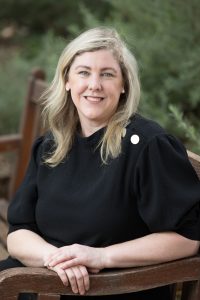Thank you to our partners at the University of Western Australia’s Uniview magazine for inviting The Raine Study to be part of their story on big data.
While it might not have appeared an obvious topic for the Raine Study to contribute to, the reality is that the Raine Study’s databases store store more than 70,000 measures and over 20 million genetic variants for each of the nearly 3,000 participants who were born into the study. Analysing this data is critical to providing a purpose for this data collection in the first place, justifying the storage of the data, and enabling informed decision-making and public policy development in healthcare.
The Raine Study’s Scientific Director Associate Professor Rebecca Glauert shared details about the huge volume and variety of data held by the Raine Study, as well as the speed at which these datasets are increasing in size with every additional round of data collection. She spoke additionally about the work her team is leading to link Raine Study data with databases in other related areas to help identify future funding priorities and public sector investment areas.
“While traditionally health data has been siloed, we’re hoping that by linking all of the data we have with other areas like justice and education, we’ll have a remarkable base of knowledge. This means we’ll continue to explore how environment and events from the womb onwards impact health outcomes not only in childhood, adolescence and early adulthood, but increasingly into older age,” said Associate Professor Glauert.
Specific content from the section on the Raine Study is excerpted below, or read the full story at https://www.uwa.edu.au/news/Article/2021/Uniview/Winter/Untangling-the-big-bang
Untangling the big bang
 As big data changes the way we live our lives, UWA is leading the way in ‘finding the signals in all of the noise’. It’s estimated that last year, humans produced an astonishing 2.5 quintillion bytes of data every day. Every second, all over the world, there are 127 new devices connected to the internet. Google records over 3.5 billion searches daily. WhatsApp users exchange up to 65 billion messages every 24 hours. All adding to the almost incomprehensible digital data pile. The challenge comes in tagging and analysing that phenomenal amount of data.
As big data changes the way we live our lives, UWA is leading the way in ‘finding the signals in all of the noise’. It’s estimated that last year, humans produced an astonishing 2.5 quintillion bytes of data every day. Every second, all over the world, there are 127 new devices connected to the internet. Google records over 3.5 billion searches daily. WhatsApp users exchange up to 65 billion messages every 24 hours. All adding to the almost incomprehensible digital data pile. The challenge comes in tagging and analysing that phenomenal amount of data.
As the power of analytical tools increases, the ability to identify crucial patterns is becoming faster and more accurate, so that hunches are replaced with insight; trends spotted before they pass by; and action taken to resolve questions that have hardly been formed. From helping to control famine, to climate analytics, mental health and suicidal ideation, resource distribution and bioinformatics, advancements in data science are helping decision-making in fields such as healthcare, manufacturing, energy efficiency, environmental sustainability, education and job training, transportation and R&D.
With world-leading capabilities and expertise in data intensive discovery across the areas of analytics, infrastructure and applications, UWA’s ability to apply a multidisciplinary approach to harnessing and mining big data is paying dividends and leading to new partnerships across every sector of our community. Here are just some of the ways the University is helping to untangle the data explosion.
Improving human health and well-being
Associate Professor Rebecca Glauert Scientific Director, The Raine Study (UWA)

Rebecca Glauert, The Raine Study
Emerging big data technologies have also meant big changes in healthcare as data, including hospital, medical and prescription records, are consolidated and analysed to discover trends, better treat patients and make more accurate predictions. The landmark Western Australian-based The Raine Study has been tracking almost 3,000 children, their parents, grandparents and now their own children, for the past 30 years and is one of the largest successful cohort studies of pregnancy, childhood and adulthood in the world.
Established in Perth in 1989 to investigate how early-life factors during fetal development impact on child and adult health, it’s led to a phenotypic dataset containing more than 70,000 measures and over 20 million genetic variants on each participant, as well as biological samples and genome-wide genotyping data for children and their mothers.
As a result, it’s become an invaluable source for researchers, with the environmental, developmental and health research using its data published in more than 600 academic journals and contributing to the understanding of many aspects of public health, says the study’s new Scientific Director, Associate Professor Rebecca Glauert. An internationally recognised expert in data linkage, she’s enthusiastic about the opportunity to connect more than 30 years of the Raine Study’s big data with publicly held datasets from across Australia, including school and hospital records.
“We’re at an exciting point, with four generations now in the study,” Associate Professor Glauert said. “Our babies who were in utero when recruited by their mums and dads are now having their own kids – it’s amazing to have such a huge amount of biological information. While traditionally health data has been siloed, we’re hoping that by linking all of the data we have with other areas like justice and education, we’ll have a remarkable base of knowledge. This means we’ll to continue to be able to explore how environment and events from the womb onwards impact health outcomes not only in childhood, adolescence and early adulthood, but increasingly into mid-life and elderly life stages.”

